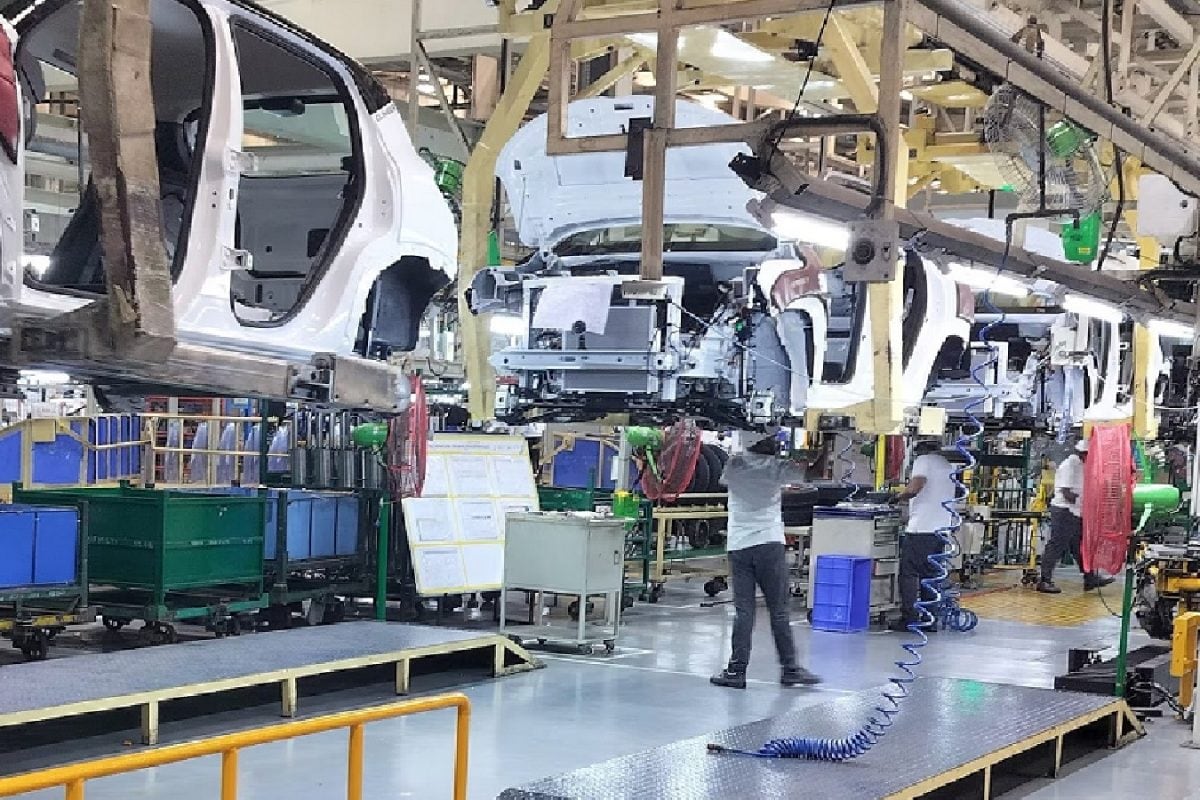The Indian government's Production-Linked Incentive (PLI) scheme, launched in 2021 to bolster domestic manufacturing, has seen significant progress, with ₹21,534 crore disbursed across 12 sectors as of June 2025. This initiative, designed to attract investments, enhance production, and create employment, is a cornerstone of the "Atmanirbhar Bharat" (self-reliant India) vision.
Key Objectives and Design
The PLI scheme provides financial incentives to companies based on incremental sales of goods manufactured in India, aiming to:
- Encourage domestic and foreign firms to set up or expand manufacturing units in India.
- Create large-scale employment opportunities.
- Promote import substitution.
- Make Indian products more competitive globally.
- Enhance Domestic Manufacturing
- Attract Foreign Direct Investment (FDI)
- Reduce Import Dependency
- Boost Exports and Trade Balance
- Generate Employment
- Strengthen Global Supply Chains.
The incentives range from 4% to 10% of incremental sales, varying by sector, and are offered for a period of 5 years. Eligibility depends on meeting minimum investment, incremental sales, and value addition criteria.
Sectors Covered
The PLI scheme initially covered 3 sectors in 2020 and expanded to 14 sectors by 2021. The 12 sectors that have received incentives so far include:
- Large-Scale Electronics Manufacturing
- IT Hardware
- Bulk Drugs
- Medical Devices
- Pharmaceuticals
- Telecom & Networking Products
- Food Processing
- White Goods
- Automobiles & Auto Components
- Specialty Steel
- Textiles
- Drones & Drone Components
Impact and Achievements
The PLI scheme has spurred investments worth ₹1.76 lakh crore, leading to production and sales exceeding ₹16.5 lakh crore and creating over 12 lakh direct and indirect jobs until March 2025.
- Boost to Domestic Production: The PLI scheme has significantly increased domestic manufacturing in sectors such as electronics, telecom, and pharmaceuticals.
- Attraction of Foreign Direct Investment (FDI): The PLI scheme has proven effective in attracting FDI, leading to the establishment of global manufacturing hubs in India.
- Job Creation: The PLI scheme has played a crucial role in job creation by attracting investments in labor-intensive sectors like textiles and automobiles.
- Increase in Domestic Manufacturing Output: Since its introduction, the PLI scheme has seen significant uptake from both Indian and multinational companies. For instance, in the electronics sector, companies like Samsung, Foxconn, and Wistron have committed to substantial investments. As of 2023, the electronics manufacturing sector in India witnessed a 30% growth, driven by PLI incentives, making it one of the fastest-growing sectors.
- Strengthening of Supply Chains: One of the most significant long-term impacts of the PLI scheme will be the strengthening of domestic supply chains.
- Increase in GDP Contribution from Manufacturing: The Indian government aims to increase the manufacturing sector's contribution to GDP from the current 15-17% to 25% by 2025.
- Emergence of India as a Global Manufacturing Hub: India's aspiration to become a global manufacturing powerhouse is at the heart of the PLI initiative.
Sector-Specific Successes
- Pharmaceuticals: The pharma sector has witnessed cumulative sales of ₹2.66 lakh crore over three years, including ₹1.70 lakh crore from exports. It has achieved a domestic value addition of 83.70% as of March 2025.
- Bulk Drugs: The scheme has contributed to making India a net exporter of bulk drugs, with exports of ₹2,280 crore compared to imports of ₹1,930 crore in 2021-22.
- Textiles: Exports of Indian Man-Made Fibre (MMF) textiles have risen to USD 6 billion in 2024-25, up from USD 5.7 billion in 2023-24.
- Food Processing: The sector has attracted ₹9,032 crore in investments
- Medical Devices: 19 green-field projects have started production of 44 advanced medical devices, including MRI machines and CT scans, reducing import dependency.
- Drone Industry: The sector has witnessed a sevenfold turnover increase under the PLI scheme, driving investment, job creation, and positioning India as a global drone manufacturing leader.
Challenges and the Way Forward
Despite the successes, the PLI scheme faces challenges such as:
- Investment Shortfalls: Some companies have failed to meet investment targets due to shifts in strategic planning.
- Implementation Hurdles: The gap between allocation and disbursement highlights the complex interplay of policy ambition and industry realities.
- Competition from Cheaper Imports: Some sectors struggle against cheaper competitors like China.
- Lack of a Robust Local Component Ecosystem: Major brands are reluctant to boost production and exports due to a lack of a robust local component ecosystem
To address these challenges, the government is exploring measures such as partially reimbursing investments, extending deadlines, and increasing the frequency of payments. Commerce and Industry Minister Piyush Goyal has called on departments to draw up a roadmap for the next five years, focusing on export competitiveness, skilled manpower creation, and infrastructure development.
Conclusion
The PLI scheme is playing a crucial role in transforming India into a global manufacturing hub. By incentivizing domestic production, attracting investments, and promoting exports, the scheme is contributing to economic growth, job creation, and self-reliance. While challenges remain, the government's commitment to addressing them and adapting the scheme will be critical to its long-term success.

